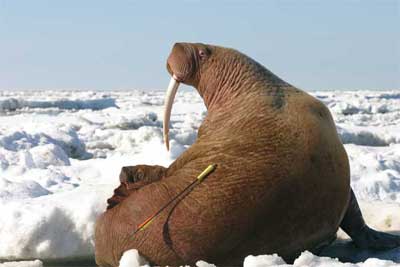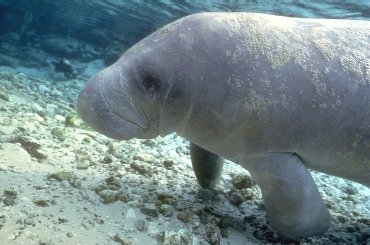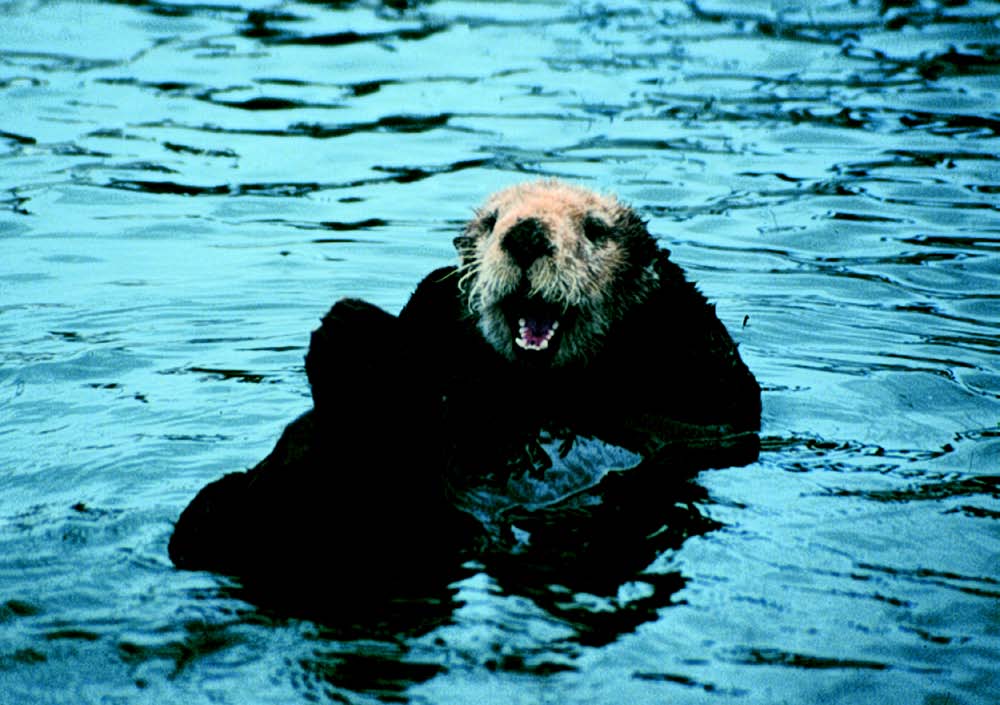- Home
- About S&T
- Taxa/Organisms
- Ecosystems
- Issues
- Methods & Tools
- Reports & Publications
- Location
- Search
Publisher: USGS | Science Center: Alaska Science Center (ASC, Anchorage) | Format: URL
alaska.usgs.gov — USGS attached satellite radio-tags to 10 adult walruses (both males and females) to map walrus foraging locations within the St. Lawrence Island polynya. The radio-tags characterized hourly walrus foraging status and provided animal location estimates for 6 to 8 weeks. These data will be used with data from benthic samples collected in the same More...

Publisher: NBII | Format: URL
pollinators.nbii.gov — The global declines in many kinds of pollinator species could potentially impact the global food supply, as many plants depend upon specific pollinators to reproduce. The Web site of the NBII Pollinators Project provides access to information about the biology, ecology, conservation status, and threats to native pollinators, pollinator-dependent More...

Publisher: USGS | Science Center: Florida Integrated Science Center (FISC, Gainesville) | Format: URL
fl.biology.usgs.gov — Web page for the Sirenia Project, a USGS Florida Integrated Science Center project that conducts studies on the West Indian manatee (Trichechus manatus). Includes links to manatee research in the news, international research, publications and presentations, and project staff contact information.

Publisher: USGS | Science Center: Fort Collins Science Center (FORT, Ft. Collins) | Format: URL
www.fort.usgs.gov — USGS scientist Craig Allen, along with Tom Swetnam of the University of Arizona Laboratory of Tree-Ring Research, Scott Anderson of Northern Arizona University, and others, have been developing landscape-level fire histories in the Jemez and Sangre de Cristo Mountains of northern New Mexico. These histories are compiled using charcoal deposits More...

September 16 2008 | Publisher: USGS | Science Center: Northern Rocky Mountain Science Center (NRMSC, Bozeman) | Format: .PDF
www.nrmsc.usgs.gov — It has been estimated that 765 grizzly bears reside in northwest Montana. USGS biologist Katherine Kendall at Northern Rocky Mountain Science Center (NOROCK) has been actively photographing and recording grizzly bears and black bears with remote cameras. Using hair snag samples collected from barbed wire hair traps and bear rub trees for genetic More...

March 25 2008 | Publisher: Other (Bat Conservation International) | Format: URL
www.batcon.org — Hibernating bats are dying by the tens of thousands in the northeastern United States, and a growing circle of top scientists is anxiously trying to figure out why. The mystery affliction, reported in New York, Vermont and Massachusetts, is dubbed "white-nose syndrome" because many affected bats had visible halos of white fungus around their More...

2008 | Publisher: USGS | Science Center: Fort Collins Science Center (FORT, Ft. Collins) | Format: URL
www.fort.usgs.gov — With the exception of Aspen, coniferous species dominate the forests of the Rocky Mountains (Populus tremuloides Michx.; Peet, 2000). The establishment of new aspen stands in the central Rocky Mountains generally follows major disturbances, particularly forest fires, with new stems sprouting from surviving root systems and with rare establishment More...

2007 | Publisher: Other (Ecological Society of America) | Format: .PDF
www.nrmsc.usgs.gov — Every winter, government agencies feed ;6000 metric tons (63 106 kg) of hay to elk in the southern Greater Yellowstone Ecosystem (GYE) to limit transmission of Brucella abortus, the causative agent of brucellosis, from elk to cattle. Supplemental feeding, however, is likely to increase the transmission of brucellosis in elk, and may be affected by More...

2006 | Publisher: USGS | Science Center: Fort Collins Science Center (FORT, Ft. Collins) | Format: URL
www.fort.usgs.gov — Although the monitoring of black-footed ferret (Mustela nigripes) populations following reintroductions has not been haphazard, several ferret recovery groups since 1994 have recommended development of uniform standards prescribing minimum methods, intensities, and frequencies of monitoring that would provide data on population size, mortality More...

September 2005 | Publisher: USGS (Soundwaves) | Science Center: USGS Other | Format: URL
soundwaves.usgs.gov — Biologists in the Sirenia Project at the U.S. Geological Survey (USGS) Florida Integrated Science Center (FISC) in Gainesville, FL, are currently identifying and mapping the genetic material of manatees. Their goal is to better understand and predict the manatee's ability to react to environmental stimuli, such as prolonged periods of cold More...

May 2005 | Publisher: USGS | Science Center: National Wildlife Health Center (NWHC, Madison) | Format: .PDF
www.nwhc.usgs.gov — Recent increases in the frequency and variety of infectious diseases in the southern sea otter may jeopardize the population recovery of this threatened species. This information sheet includes a list of selected publications.

1999 | Publisher: USGS | Science Center: Fort Collins Science Center (FORT, Ft. Collins) | Format: URL
www.fort.usgs.gov — A quasi-experimental situation exists in Rocky Mountain National Park, where elk (Cervus elaphus) populations have increased 3-fold since 1968 following their release from artificial controls within the park. Increases in elk habitat use and decreases in deer habitat use were observed. Significant increases in cover of mosses and lichens occurred More...
